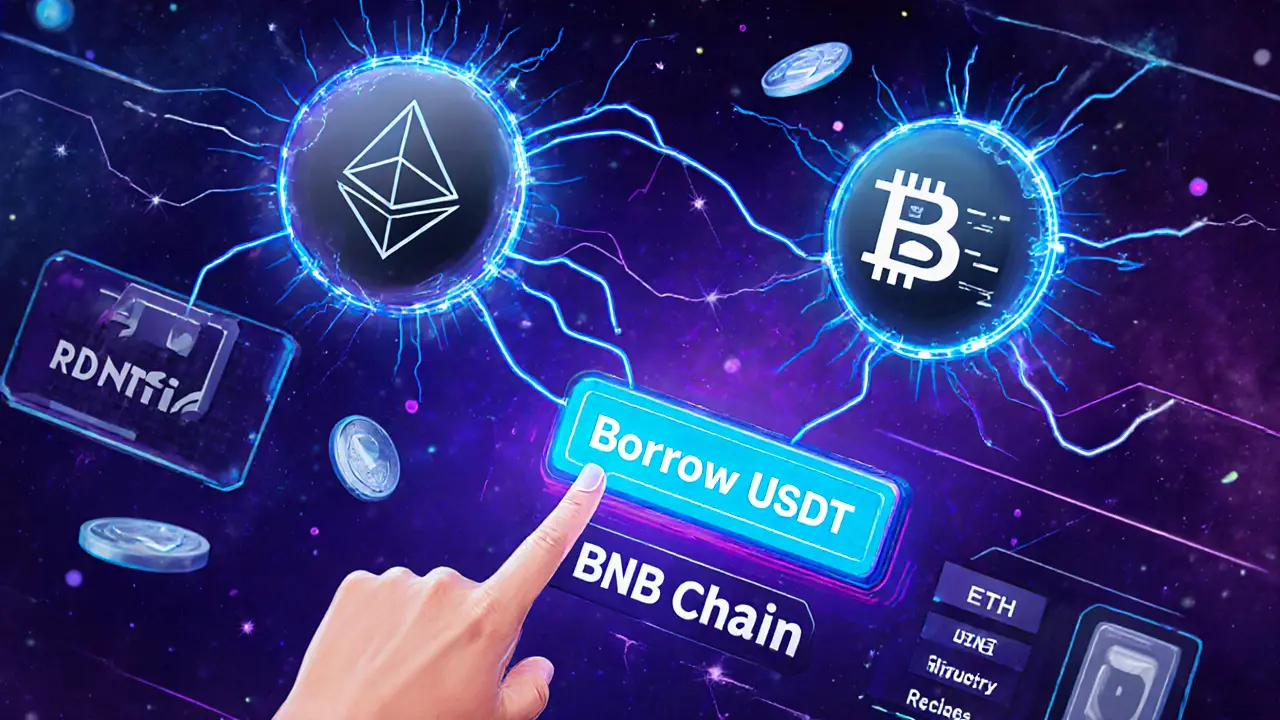Cross-chain DeFi: Everything You Need to Know
When talking about Cross-chain DeFi, a set of decentralized finance services that operate across multiple blockchains, allowing assets to move freely and earn yields without being locked to a single network. Also known as interoperable DeFi, it relies heavily on cross-chain bridges, protocols that lock a token on one chain and mint its counterpart on another and on robust DeFi liquidity pools, collections of funds that enable trading, lending, and staking across chains. These components together create the interoperability token, a digital asset designed to be easily transferred between ecosystems.
Key Concepts in Cross-chain DeFi
Understanding cross-chain DeFi starts with the idea that it encompasses interoperability solutions. In plain terms, if you can move Bitcoin from its native chain to a DeFi platform on another chain, you’re using a cross‑chain bridge. That bridge requires smart contracts on both sides to lock, verify, and release assets. The more liquid a pool is, the smoother the swap – so DeFi liquidity influences the speed and cost of cross‑chain transactions. Think of it like a highway: bridges are the exits, liquidity is the traffic flow, and smart contracts are the traffic lights that keep everything safe.
Smart contracts are the workhorses behind every cross‑chain move. They enable actions such as minting a wrapped token, validating proofs, and triggering payouts. Because they run without a middleman, users can trust the code instead of a custodian. However, the code must be audited; otherwise, the bridge becomes a target for hacks. Recent incidents showed that a single vulnerability can drain millions, reminding us that security shapes the trust users place in cross‑chain DeFi.
Real‑world projects illustrate these ideas. Tokens like EYWA and Aperture Finance are built around a cross‑chain bridge that connects to Curve pools, letting users earn yield on assets they already hold. These projects show how an interoperability token can bring liquidity from one chain into another, expanding earning opportunities without requiring users to swap on centralized exchanges.
Challenges still exist. Bridge operators must manage liquidity across many chains, which can lead to fragmentation – users may find deep liquidity on one chain but shallow pools on another. Regulatory bodies are also watching how assets move across borders, meaning compliance requirements could affect how bridges are built. In short, the ecosystem requires both technical robustness and clear legal frameworks to grow.
Luckily, a host of tools help you stay on top of the space. Analytics dashboards track bridge volumes, while aggregators compare fees and speeds across multiple routes. Monitoring these signals lets you pick the cheapest, fastest path for your transfer and avoid risky bridges. For anyone looking to earn yield, multi‑chain yield farming platforms bundle several bridges and liquidity sources, offering a one‑click experience.
Below you’ll find a curated set of articles that dive deeper into each aspect mentioned here. From detailed token guides and airdrop walkthroughs to exchange reviews and regulatory updates, the collection gives you practical steps to navigate cross‑chain DeFi confidently.

Radiant Capital (RDNT) is a cross-chain DeFi lending protocol that lets users deposit and borrow assets across multiple blockchains without bridges. Learn how RDNT works, its risks, and whether it's worth using.
Continue Reading

Learn what Wrapped Conflux (WCFX) is, how it works, current price data, where to trade, risks, and future outlook in this 2025 guide.
Continue Reading






